-
 Bitcoin
Bitcoin $118300
-0.58% -
 Ethereum
Ethereum $3825
0.11% -
 XRP
XRP $3.137
-0.71% -
 Tether USDt
Tether USDt $0.9999
-0.01% -
 BNB
BNB $803.9
-3.37% -
 Solana
Solana $181.5
-1.94% -
 USDC
USDC $0.9999
0.01% -
 Dogecoin
Dogecoin $0.2238
-2.51% -
 TRON
TRON $0.3358
2.12% -
 Cardano
Cardano $0.7844
-2.16% -
 Hyperliquid
Hyperliquid $43.31
-1.48% -
 Sui
Sui $3.807
-4.04% -
 Stellar
Stellar $0.4203
-1.96% -
 Chainlink
Chainlink $17.79
-3.00% -
 Bitcoin Cash
Bitcoin Cash $567.8
-1.34% -
 Hedera
Hedera $0.2614
-4.30% -
 Avalanche
Avalanche $24.19
-4.46% -
 Litecoin
Litecoin $109.2
-0.74% -
 UNUS SED LEO
UNUS SED LEO $8.969
-0.01% -
 Toncoin
Toncoin $3.404
3.97% -
 Ethena USDe
Ethena USDe $1.001
-0.01% -
 Shiba Inu
Shiba Inu $0.00001307
-3.19% -
 Uniswap
Uniswap $10.33
-1.23% -
 Polkadot
Polkadot $3.884
-4.06% -
 Monero
Monero $312.9
-1.87% -
 Dai
Dai $1.000
0.01% -
 Bitget Token
Bitget Token $4.537
-2.24% -
 Pepe
Pepe $0.00001156
-3.40% -
 Cronos
Cronos $0.1437
-0.89% -
 Aave
Aave $282.8
-2.77%
Is it credible that a large-volume positive line suddenly appears in the short-selling arrangement of the moving average system?
A large-volume positive candle in a short-selling setup may signal a reversal, especially if it closes above key moving averages with strong follow-through.
Jul 29, 2025 at 03:29 pm
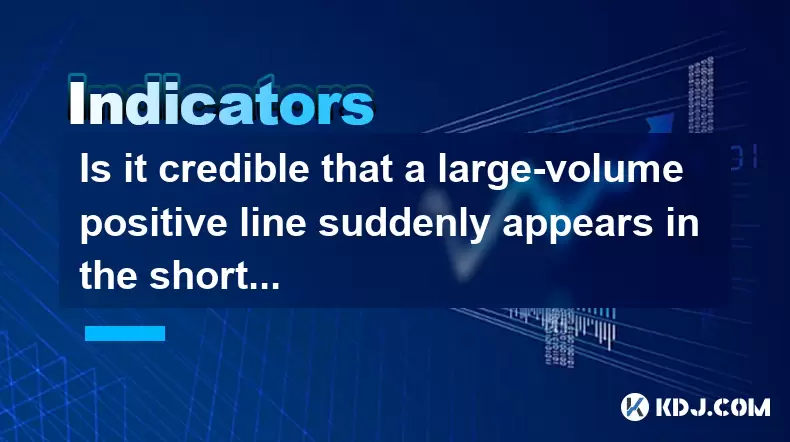
Understanding Short-Selling in the Moving Average System
In cryptocurrency trading, the moving average (MA) system is widely used to identify trends and potential reversal points. When traders engage in short-selling, they aim to profit from a decline in asset prices. This strategy involves borrowing an asset, selling it at the current market price, and repurchasing it later at a lower price to return it, keeping the difference as profit. The moving average acts as a dynamic support or resistance level. A common short-selling signal occurs when the price crosses below a key MA, such as the 50-day or 200-day moving average, indicating bearish momentum.
Traders using this system often rely on crossover strategies, such as when a short-term MA crosses below a long-term MA—commonly known as a "death cross." In this context, any sudden appearance of a large-volume positive line—a candlestick with strong upward movement accompanied by high trading volume—can appear contradictory. This raises questions about the reliability of the short-selling signal and whether the market is undergoing a reversal or manipulation.
What Does a Large-Volume Positive Line Indicate?
A large-volume positive line on a price chart signifies a significant buying surge within a single trading period. Volume is a critical confirmation tool in technical analysis. When volume surges alongside a bullish candle, it suggests strong market participation and conviction behind the price move. In a short-selling setup based on moving averages, such a candle may indicate one of several scenarios:
- Short covering: Traders who had short positions may be rushing to close them to avoid losses, triggering a rapid price increase.
- Institutional buying: Large players may be entering long positions, overpowering the existing bearish sentiment.
- News-driven reaction: Unexpected positive news about the cryptocurrency—such as exchange listings, regulatory clarity, or technological upgrades—can trigger sudden buying.
The presence of high volume makes this signal more credible than a price spike on low volume, which could be dismissed as noise. Therefore, a large-volume positive line in a short-selling context should not be ignored; it may reflect a shift in market dynamics.
Assessing Credibility Within the MA Framework
To determine whether the large-volume positive line undermines the short-selling signal, traders must assess its position relative to the moving averages. Consider the following:
- If the positive candle closes above a key moving average, such as the 50-day MA, and volume confirms the breakout, this could signal a trend reversal.
- If the candle forms a bullish engulfing pattern or a hammer near a support level, it strengthens the case for a reversal.
- Conversely, if the candle fails to close above the MA and is followed by bearish candles, the original short signal may still hold.
Additionally, traders should examine the convergence or divergence of multiple MAs. For instance, in a moving average ribbon setup where several MAs are stacked in descending order, a single bullish candle may not disrupt the overall bearish structure unless followed by sustained upward movement.
Step-by-Step Analysis of the Price Action
When encountering a large-volume positive line during a short-selling setup, follow these steps to evaluate its significance:
- Identify the moving average configuration: Determine whether the price was below a downward-sloping MA cluster before the spike.
- Check the volume profile: Use a volume oscillator or on-balance volume (OBV) indicator to confirm whether the volume is significantly higher than recent averages.
- Analyze the candlestick pattern: Look for confirmation patterns such as a break of a descending trendline or a close above the MA.
- Monitor post-candle behavior: Observe the next 1–3 candles to see if the price sustains above the MA or reverts back below.
- Review higher timeframes: A bullish signal on the 1-hour chart may be less significant if the daily chart remains bearish.
Each of these steps helps filter out false signals. For example, if the volume spike occurs during a low-liquidity period, such as over a weekend, it may be less reliable. Similarly, if the candle is wick-heavy (long upper shadow), it suggests rejection at higher prices, weakening the bullish case.
Common Misinterpretations and How to Avoid Them
Many traders misinterpret a single large-volume candle as a definitive reversal signal. However, one candle does not make a trend. The moving average system relies on sustained price action, not isolated events. Some common pitfalls include:
- Overreacting to volume spikes without considering the broader trend.
- Ignoring the position relative to moving averages—a candle above the MA on low follow-through volume may be a fakeout.
- Failing to use stop-loss orders when maintaining a short position after such a spike, risking large losses if a true reversal occurs.
To avoid these errors, traders should combine the MA system with additional confirmation tools, such as the Relative Strength Index (RSI), MACD, or support/resistance levels. For instance, if the RSI moves from oversold to neutral during the volume spike, it supports the idea of renewed buying interest.
Practical Example in Cryptocurrency Markets
Consider a scenario involving Bitcoin (BTC) on the 4-hour chart. The price has been trading below the 50-period and 200-period MAs, forming lower highs—a classic short setup. Suddenly, a green candle appears with volume three times the 20-period average, closing above the 50-period MA. To analyze this:
- First, check if the close is sustained—does the next candle hold above the MA?
- Second, verify external catalysts—was there a major announcement from a crypto exchange or regulatory body?
- Third, inspect order book data: did large buy orders appear on major exchanges like Binance or Coinbase?
- Fourth, assess funding rates on futures markets: if rates turn sharply positive, it indicates long-side leverage buildup.
If all signs point to strong buying pressure, the original short position may need to be adjusted or closed.
Frequently Asked Questions
Can a large-volume positive line occur due to market manipulation?
Yes, especially in less liquid cryptocurrency markets. Whales or organized groups may trigger a "short squeeze" by placing large buy orders, forcing short sellers to cover. This can create a temporary spike that reverses quickly. Checking order book depth and trade clustering can help identify such activity.
How do I differentiate between a genuine reversal and a bull trap?
A genuine reversal is confirmed by sustained price action above key MAs, rising volume on up days, and alignment with higher timeframes. A bull trap often shows a single large candle followed by immediate rejection and resumption of the downtrend. Use volume-weighted average price (VWAP) to assess whether the breakout has real momentum.
Should I exit my short position immediately when such a candle appears?
Not necessarily. Evaluate the context and confirmation. If the candle closes above the MA with strong volume and the next candle confirms upward movement, consider exiting or tightening stop-loss. If it’s an isolated event with no follow-through, the short thesis may still be valid.
Does the credibility of the signal vary by timeframe?
Yes. A large-volume positive line on the daily chart carries more weight than on the 5-minute chart. Short-term spikes on lower timeframes are more prone to noise and algorithmic trading distortions. Always prioritize signals on higher timeframes for greater reliability.
Disclaimer:info@kdj.com
The information provided is not trading advice. kdj.com does not assume any responsibility for any investments made based on the information provided in this article. Cryptocurrencies are highly volatile and it is highly recommended that you invest with caution after thorough research!
If you believe that the content used on this website infringes your copyright, please contact us immediately (info@kdj.com) and we will delete it promptly.
- Dalio's Take: Balancing Bitcoin, Gold, and the Debt Doom Loop
- 2025-07-31 00:51:15
- PENGU Price Plunge? Binance Transfers and Token Transfer Trends
- 2025-07-30 23:10:15
- Navigating Crypto Investment: Bitcoin Mining and the Rise of Cloud Mining in the Big Apple
- 2025-07-30 22:31:15
- Meme Coins, Profit, and Investment: Riding the Crypto Wave in Style
- 2025-07-30 23:10:15
- LivLive's Gamified AR Launch Phase: Level Up Your Reality!
- 2025-07-30 22:31:15
- Bitcoin, Crypto, and the Golden Age: Navigating the Future of Digital Assets
- 2025-07-31 00:10:14
Related knowledge
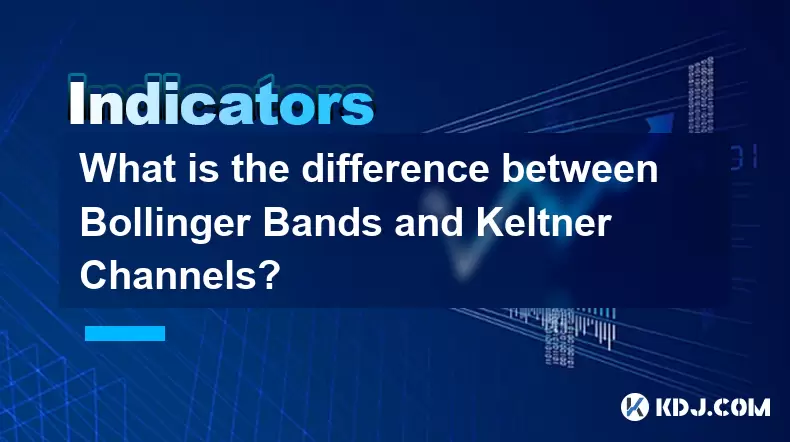
What is the difference between Bollinger Bands and Keltner Channels?
Jul 30,2025 at 11:30pm
Understanding Bollinger Bands and Their Core ComponentsBollinger Bands are a widely used technical analysis tool developed by John Bollinger in the 19...
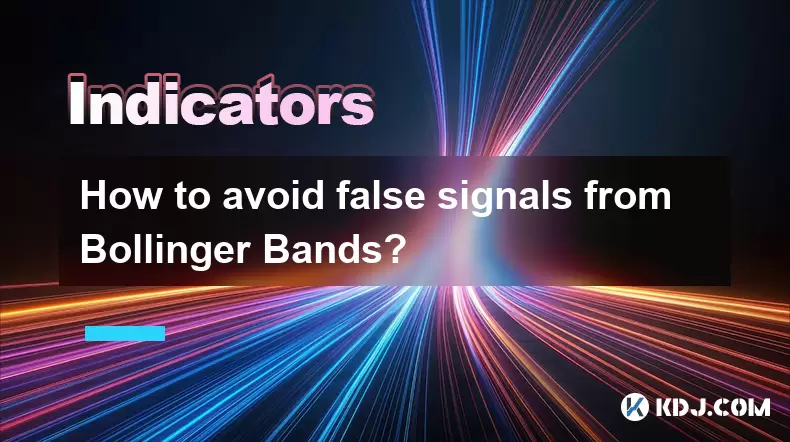
How to avoid false signals from Bollinger Bands?
Jul 30,2025 at 11:42pm
Understanding Bollinger Bands and Their Core ComponentsBollinger Bands are a widely used technical analysis tool developed by John Bollinger in the 19...
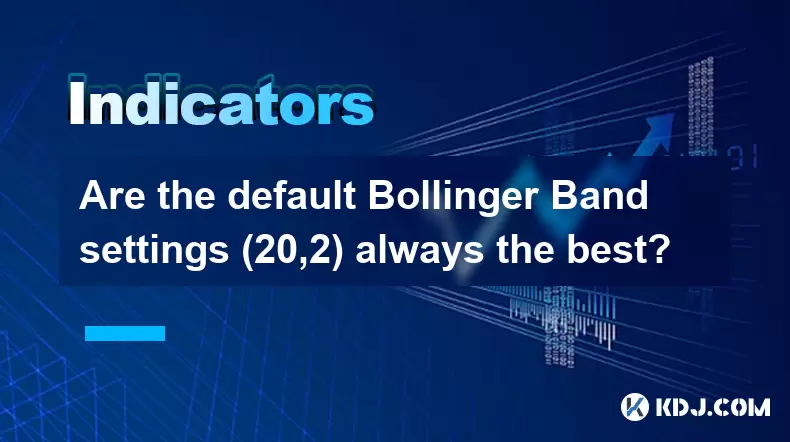
Are the default Bollinger Band settings (20,2) always the best?
Jul 30,2025 at 11:36pm
Understanding the Standard Bollinger Band ConfigurationThe default Bollinger Band settings of (20,2) are widely used across the cryptocurrency trading...
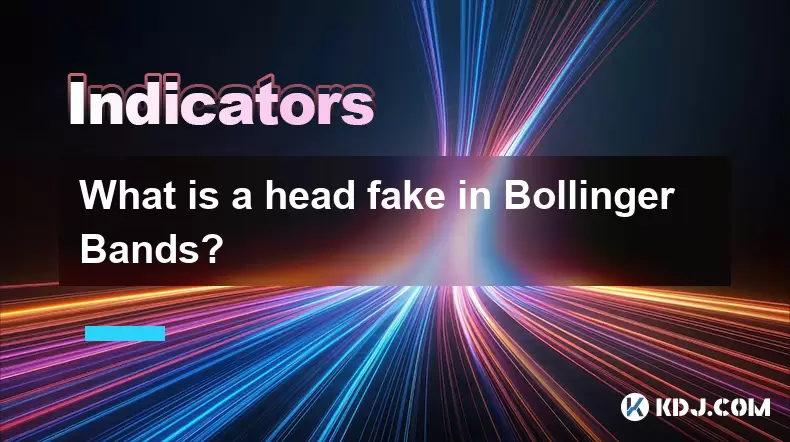
What is a head fake in Bollinger Bands?
Jul 30,2025 at 09:44pm
Understanding Bollinger Bands and Their StructureBollinger Bands are a widely used technical analysis tool developed by John Bollinger in the 1980s. T...
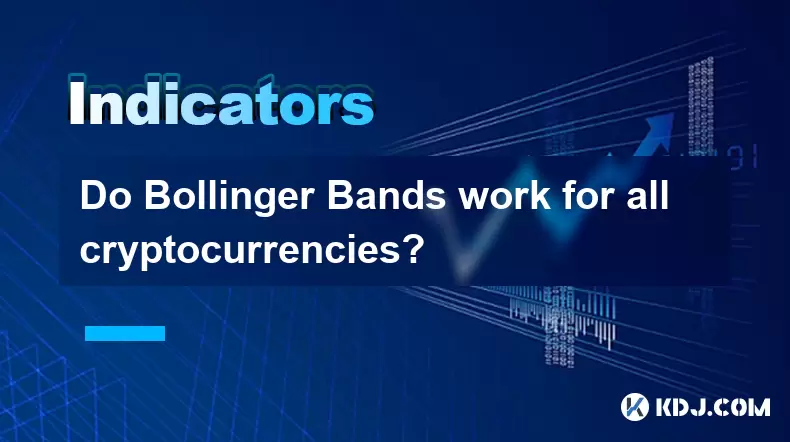
Do Bollinger Bands work for all cryptocurrencies?
Jul 30,2025 at 09:30pm
Understanding Bollinger Bands in Cryptocurrency TradingBollinger Bands are a widely used technical analysis tool developed by John Bollinger in the 19...
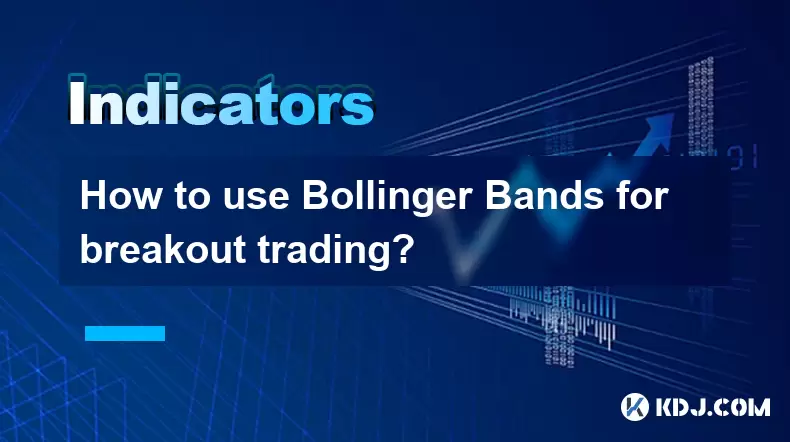
How to use Bollinger Bands for breakout trading?
Jul 30,2025 at 10:27pm
Understanding Bollinger Bands and Their ComponentsBollinger Bands are a widely used technical analysis tool developed by John Bollinger in the 1980s. ...

What is the difference between Bollinger Bands and Keltner Channels?
Jul 30,2025 at 11:30pm
Understanding Bollinger Bands and Their Core ComponentsBollinger Bands are a widely used technical analysis tool developed by John Bollinger in the 19...

How to avoid false signals from Bollinger Bands?
Jul 30,2025 at 11:42pm
Understanding Bollinger Bands and Their Core ComponentsBollinger Bands are a widely used technical analysis tool developed by John Bollinger in the 19...

Are the default Bollinger Band settings (20,2) always the best?
Jul 30,2025 at 11:36pm
Understanding the Standard Bollinger Band ConfigurationThe default Bollinger Band settings of (20,2) are widely used across the cryptocurrency trading...

What is a head fake in Bollinger Bands?
Jul 30,2025 at 09:44pm
Understanding Bollinger Bands and Their StructureBollinger Bands are a widely used technical analysis tool developed by John Bollinger in the 1980s. T...

Do Bollinger Bands work for all cryptocurrencies?
Jul 30,2025 at 09:30pm
Understanding Bollinger Bands in Cryptocurrency TradingBollinger Bands are a widely used technical analysis tool developed by John Bollinger in the 19...

How to use Bollinger Bands for breakout trading?
Jul 30,2025 at 10:27pm
Understanding Bollinger Bands and Their ComponentsBollinger Bands are a widely used technical analysis tool developed by John Bollinger in the 1980s. ...
See all articles

























































































